Here’s the truth: not every client is easy, yet almost every relationship is worth nurturing.
If you have run an accounting firm for any length of time, you probably own at least one war story about how to deal with difficult clients. Maybe it is the customer who emails at midnight with panicked questions or the one who habitually pays ninety days late. These scenarios drain energy and profit, yet when handled well, they turn nightmares into opportunities. The key is to marry clear communication with structured processes that keep every relationship strong, confident, and profitable.
Table of contents
- How to deal with difficult clients, a universal challenge for firms
- Clear communication: The first step in how to deal with difficult clients
- Structured processes: How to deal with difficult clients with consistent systems
- Actionable checklist on how to deal with difficult clients
- Long-term relationships: Turning difficult clients into loyal clients
- Why repaired relationships outperform new wins
- From friction to advocacy
- Knowing when to release
- Key takeaways
- Ready to strengthen every client relationship?
- FAQ
How to deal with difficult clients, a universal challenge for firms
It’s 6 PM on a Friday, and your biggest client is on the phone – again – with yet another “urgent” request. You already know this call could derail the evening. Every accounting firm owner has encountered a “difficult” client: the one who constantly nitpicks fees, pays late or turns minor requests into fire drills. Handled poorly, these clients can drain your firm’s morale, time, and profits. Handled well, however, even demanding clients can become loyal partners.
Why does it matter how to deal with difficult clients instead of just replacing them? Because losing a client hurts. Acquiring a new client can cost 5–25 times more than retaining an existing one. Even a modest improvement in retention - say 5% - can boost profits by 25%–95%. In plain terms, it pays to fix strained relationships. Difficult clients, handled properly, can become some of your most loyal allies.
Of course, not every client is a fit. If a customer is truly toxic – consuming exorbitant resources or abusing your staff – it’s okay to set firm limits. But before it gets to that point, there’s plenty you can do to prevent difficult situations from escalating. In the sections that follow, we’ll break down how to deal with difficult clients using communication and process improvements that any accounting firm (yes, even yours) can implement. The result? Stronger, longer client relationships built on trust, clarity, and mutual respect.
Clear communication: The first step in how to deal with difficult clients
If a client relationship is on the rocks, chances are there’s a communication breakdown at its core. Learning how to deal with difficult clients often starts with honing the most fundamental skill: listening and communicating with clarity. As one CPA put it, “If you’re getting blindsided by a difficult client, it usually means you’re not communicating often enough.” Frequent, proactive communication can prevent many issues from ever arising.
Set expectations early
Many frustrations come from vague scopes or fuzzy timelines. Discuss services, deadlines, fees, out-of-scope rules, and response times in the onboarding call, then place every detail inside the engagement letter or proposal. Thomson Reuters calls this the single best way to manage difficult clients.
Listen actively
Even impatient clients soften when they feel heard. Research shows that genuine listening is the fastest route to rebuilding trust. Paraphrase concerns before defending your work.
“We dreaded one client’s calls. Clarifying expectations in plain language dropped the tension almost overnight.” - Partner, restaurant bookkeeping firm.
Keep regular touchpoints
A partner once said, “You will never be their trusted adviser if the only time they hear from you is tax season.” Schedule monthly status emails or quarterly video sessions. Small issues surface early, not as year-end explosions.
Use the right channel.
Some owners love a quick dashboard, others prefer a phone call. Meeting them where they feel confident avoids tone misreads that written text can trigger. The Journal of Accountancy confirms that tailoring channels reduces misunderstandings.
Respond promptly
Silence fuels anxiety. Even a quick “We received your note, update coming tomorrow” reassures clients that you are present. As one managing member told Journal of Accountancy, fast callbacks define true professionalism .
Address issues head-on, own any error, and propose a fix. Honesty plus action earns respect faster than perfect performance.
Structured processes: How to deal with difficult clients with consistent systems
Clear communication is essential, but words alone aren’t always enough. Difficult client situations also arise from broken processes – unclear workflows, ad-hoc billing practices, or lack of organization. If your firm’s internal processes are chaotic, even the best intentions can fall flat. That’s why structured processes are a secret weapon in dealing with difficult clients. When you have well-defined, consistent systems for onboarding, service delivery, and billing, you remove many common friction points that trigger client frustrations.
Think about it from the client’s perspective: If your invoicing is irregular or error-prone, a client might grow suspicious or upset (e.g., “Why is this invoice higher than last month’s? Did they overcharge me?”). If scope changes aren’t documented, a client might feel nickeled-and-dimed. A lack of process can create difficult clients by undermining their trust. On the flip side, a smooth, transparent process builds confidence. It shows professionalism. As one managing partner lamented, “Late invoices made us look sloppy, even when our advice was spot on.” Nobody wants to look sloppy to a clients. A solid process ensures you won’t.
Here are a few structured process strategies to implement:
Standardize services and agreements
Every engagement begins with a single source of truth: a digital proposal that spells out the scope, deliverables, timeline, fee structure, and payment terms in everyday language. Getting the client’s e-signature locks those details so everyone knows where the goalposts sit. When a request pops up outside the signed scope - say, an extra set of quarterly projections - you simply reference the document and discuss next steps instead of arguing about who-said-what. Consistency here protects your margin, eliminates confusion, and shows clients you run a tight ship. If you use Anchor’s Live Agreement, the agreement remains editable in real-time, so changes never fall through the cracks.
Run invoicing on autopilot
Nothing sours a relationship faster than a surprise bill or a missing invoice. Deloitte research indicates that manual billing can tack on ten extra days to collection cycles and leak up to 5% of revenue. Automating invoices based on the signed agreement does three things at once: it removes human error, keeps cash flow predictable, and signals professionalism. Whether you bill monthly retainers or milestone projects, schedule invoices to fire without staff touching a keyboard. Tie those invoices directly to the agreed scope so the figures always match what the client saw on day one. Clients relax because they know exactly when charges will hit, and your team gains back hours that used to disappear into spreadsheets.
Collect payments automatically
Chasing payments turns advisers into debt collectors and clients into avoiders. The US Small Business Administration confirms that simplifying how customers pay slashes overdue balances dramatically. The simplest path is collecting payment details - ACH or credit card - during onboarding and setting auto-debits on each invoice due date. Clients appreciate the convenience, you appreciate the certainty, and awkward reminder emails vanish. Anchor users, for example, connect payment methods right inside the proposal so invoices fund themselves on schedule without needing manual follow-up.
One-click amendments
Change is inevitable, but confusion is optional. When a client’s needs evolve, a one-click amendment process updates the original agreement, routes it for instant e-signature, and auto-adjusts billing for future cycles. Legal tech studies show that digital change orders can cut turnaround time by 80%. That speed keeps projects moving and eliminates the “We never approved that extra fee” fight. Tools like Anchor’s amendment workflow let you tweak scope or pricing inside the Live Agreement, push it to the client for approval, and have all downstream invoices reflect the new terms automatically. No re-drafted PDFs, no phone tag, no manual math - just clarity and forward momentum.
Client portal transparency
Give every client a secure portal that shows live agreements, invoices, payment receipts, and task status in one place. PwC research found that 73% of clients now expect a self-service portal for professional services https://www.pwc.com/us/en/industries/consumer-markets/library/experience-is-everything-consumer-intelligence-series.html?utm_source=sayanchor.com. A portal ends “Where are my documents?” threads, lets clients update payment details themselves, and preserves an audit trail. Because the information is always available, trust rises and email volume drops. Anchor includes a built-in Client Portal that syncs automatically with proposals and invoices, so clients can check progress or download receipts without waiting for your team.
“After using a client portal, our inbox calmed overnight. Clients stopped chasing PDFs because everything sat in one dashboard.” - Controller, multi-location CPA firm
The beauty of structured processes is that they remove personal emotion from the equation. Agreements outline what is included, software bills what was agreed, the portal shows every update. It is not personal, it is just the process - which frees conversations for higher-level advice.
Actionable checklist on how to deal with difficult clients
Follow these five steps to strengthen every relationship: Blog Post Outline
- Audit your current client communication practices. Identify unanswered emails, unclear templates, and slow response times.
- Refresh onboarding and engagement processes. Use a repeatable checklist for proposals, kickoff calls, and deliverables.
- Train your team on empathy and expectation management. Role‑play tough conversations in weekly huddles.
- Leverage technology for consistency. Adopt an autonomous billing platform and a CRM with client portals.
- Measure success. Track retention, referral volume, and average days‑sales‑outstanding.
Implement one item per week and review results after thirty days.
Long-term relationships: Turning difficult clients into loyal clients
By now, the pattern is clear. Difficult behavior usually fades when clients feel informed, respected, and protected by consistent systems. Once you solve their pain triggers, many once-touchy clients transform into vocal champions.
Why repaired relationships outperform new wins
A client who has seen you navigate a rough patch gains proof of your reliability. That earned confidence beats slick marketing every time. Loyal clients:
- Extend lifetime value. Retainers renew on autopilot, and expansion services sell faster because decision makers already trust the quality. Bain & Company found that a 5% lift in retention can raise profits 25% to 95%.
- Generate low-cost referrals. Word-of-mouth remains the most trusted advertising: 83% of buyers trust recommendations from people they know, according to Nielsen’s global trust study.
- Give candid feedback. Strong rapport encourages honest critique, letting you improve service before silent churn sets in. Harvard Business Review notes that loyal customers are likelier to provide constructive feedback you can act on.
- Provide stability in downturns. When budgets tighten, firms cut unproven vendors first. Clients who trust you after past saves keep you on the A list, as confirmed by McKinsey research on supplier stickiness during recessions.
From friction to advocacy
Friction surfaces whenever clients face surprises - an unexpected invoice, a missing progress update, or a last-minute chase for payment details. Each shock signals that expectations were never fully agreed or reinforced by a consistent system. Reduce those shocks and expectations lock in almost automatically.
As expectations become predictable, satisfaction climbs. Clients no longer ask “Where is my return?” or “Why is this bill different?”; they see you as organized and proactive. Harvard Business Review confirms that reducing customer effort is the single strongest driver of loyalty. Over time, that calm, reliable experience turns customers into advocates. Nielsen reports that 83% of people trust peer recommendations above all other marketing messages https://www.nielsen.com/us/en/insights/article/2015/global-trust-in-advertising-2015/?utm_source=sayanchor.com. When your back office runs quietly - no billing surprises, no document hunts - clients feel safe attaching their reputation to yours, and referrals begin to flow naturally.
Knowing when to release
On rare occasions, a client refuses to respect processes or people even after several resets. At that point, disengaging is an act of stewardship for your team. Send a formal closing letter, finish outstanding work, and transition files professionally. The door stays polite, your staff feels protected, and capacity opens for ideal clients who value partnership. Thomson Reuters offers a practical framework for respectful disengagement.
Long-term loyalty is not magic. It is the predictable by-product of empathy, firm boundaries, clear communication, and rock-solid systems that make doing business effortless.
Key takeaways
- Root causes, not personalities. Most difficult behavior traces back to unclear expectations or broken internal processes. Solve the root, the symptoms fade.
- Communication creates certainty. Frequent plain-language updates, agreed timelines and fast replies eliminate surprises that ignite conflict.
- Process drives peace. Automated invoices, client portals, and one-click amendments turn billing and scope into predictable routines instead of monthly flashpoints.
- Empathy plus boundaries build respect. Active listening calms emotions, while firm policies protect your team and revenue. Balanced together, these elements convert tension into trust.
- Retention multiplies profit. Keeping a satisfied client costs far less than replacing one and can boost profit up to 95%, making relationship repair a top growth lever.
Ready to strengthen every client relationship?
A calm back office frees you to advise, not chase. Anchor stores payment methods upfront, sends invoices automatically, and syncs every dollar straight to your ledger, quieting the largest source of client friction. Try Anchor free.
Prefer a walkthrough? Book a personal 30-minute demo
FAQ
Q: What defines a “difficult” client?
A: A difficult client is one who repeatedly pays late, ignores agreed scope, communicates disrespectfully, or demands last-minute work without notice. Patterns - rather than isolated missteps - signal the problem.
Q: How does clear communication stop disputes?
A: Shared expectations remove surprises. When clients know timelines, deliverables, and fees up front, they rarely feel blindsided, so complaints fade and trust rises.
Q: Which processes cut conflict fastest?
A: Automated billing with card or ACH on file, one-click scope amendments, and a structured onboarding checklist eliminate about 80% of common tension points.
Q: Is it acceptable to fire a client?
A: Yes. If a client is abusive or chronically violates agreements despite repeated resets, a respectful disengagement protects your team, reputation, and bandwidth for better-fit clients.
Q: How quickly can these tactics be live?
A: Communication tweaks start today; an autonomous billing platform such as Anchor is fully operational in an afternoon, giving instant control over invoices, payments, and scope updates.








